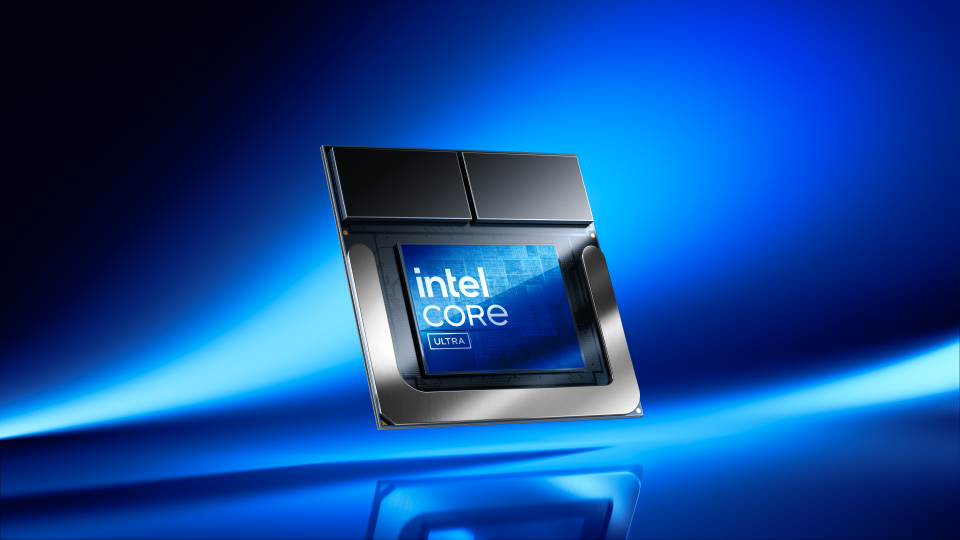Intel (INTC) on Tuesday rolled out its new Intel Core Ultra 200V line of processors as it seeks to fend off the threat of Qualcomm (QCOM) eating into its share of the laptop market.
Intel’s second-generation Core Ultra processors, the Ultra 200V series promise dramatically improved performance and power versus last year’s Core Ultra line and better battery life than Qualcomm’s Snapdragon X Elite laptop chips.
The new processors feature an updated design that ditches its predecessor’s low-power island architecture, which was meant to handle certain processes and save on battery life. But it didn’t quite work out as Intel hoped. The company, however, says the new Core Ultra 200V lineup is up to the task.
In testing, Intel says the Core Ultra 200V uses up to 50% less power versus its predecessor and gets 20% better performance per watt than Qualcomm’s Snapdragon chip.
Using the UL Procyon Office Productivity test, which simulates productivity tasks using Microsoft’s Office apps, Intel says it got 20.1 hours of battery life, beating Qualcomm’s 18.4 hours. Qualcomm, however, saw 12.7 hours of battery life while using Microsoft’s Teams, while Intel lasted 10.7 hours.
Battery life has been one of the biggest issues for Intel’s laptop chips. Ever since Apple ditched Intel and began designing its own chips in its MacBooks with extraordinary battery life, Intel has been on its backfoot.
Qualcomm’s Snapdragon X Elite chips, which are available in Windows laptops, put even more pressure on Intel to improve its processors’ power consumption or risk seeing its market share erode. The Core Ultra 200V is meant to answer those concerns and then some.
Intel says its chips offer better performance than both Qualcomm’s and AMD’s chips in overall performance using synthetic benchmarks. In other words, the chips have the potential to provide the kind of power consumers want along with long-lasting batteries. Though Intel will have to wait until consumers get their hands on laptops with the new chips before it can claim a true win.
In addition to performance and battery life improvements, Intel’s Core Ultra 200V is also designed to offer AI PC capabilities thanks to its neural processing unit (NPU) that features up to 48 trillion operations per second (TOPS) of performance. TOPS are a general means of measuring AI workload performance.
Qualcomm’s chips offer 45 TOPS, and AMD’s (AMD) Ryzen 300 AI chips provides up 50 TOPS of AI performance.
It’s important to note that while chip makers are pushing AI PCs, or Microsoft-branded Copilot+PCs, apps that actually use a laptop’s onboard AI capabilities aren’t exactly the norm yet. Many of the AI apps consumers use run on cloud-based systems that bypass a laptop’s NPU.
Think of NPU and AI performance as a kind of future-proofing measurement rather than something you’ll be using right out of the gate. If and when apps that use a laptop’s onboard AI become a part of most people’s regular workloads, then those NPUs will be invaluable.
On the GPU front, Intel is touting its chips’ performance and ability to play some of the latest PC games on the market. Qualcomm has run into difficulty with gaming on its Snapdragon chips, marking a missed opportunity to lure in gamers willing to pay top dollar for laptops with powerful processors.
Intel’s second-generation Core Ultra line comes as the company is contending with some of its largest challenges in its 56-year history. Nvidia (NVDA) dominates the AI data center business thanks to its high-powered GPUs, while rival chip builder TSMC is outpacing the company in terms of chip technologies.
Intel is working to turn that around, however, building out its own manufacturing capabilities in locations across the globe, creating its Intel Foundry business segment, and preparing its next-generation chip technology it calls Intel 18A, which CEO Pat Gelsinger says will return the company to its place on the semiconductor throne.
But so far Intel is still the largest customer of its foundry business, though it’s also signed a deal to produce some of Microsoft’s (MSFT) custom chips.
During its latest earnings report, Intel announced lower than anticipated revenue and earnings per share and issued disappointing guidance for the current quarter. What’s more, the company said it is cutting 15% of its workforce and suspended its dividend payment as it focuses on a broader restructuring plan.
Shares of Intel are off a whopping 56% year-to-date, falling to $20.56 per share as of midday Tuesday. Rival AMD’s stock is up 131%, while AMD’s is up 2.3% year-to-date. Qualcomm shares are up 19%.
Email Daniel Howley at dhowley@yahoofinance.com. Follow him on Twitter at @DanielHowley.
Read the latest financial and business news from Yahoo Finance.
EMEA Tribune is not involved in this news article, it is taken from our partners and or from the News Agencies. Copyright and Credit go to the News Agencies, email news@emeatribune.com Follow our WhatsApp verified Channel





